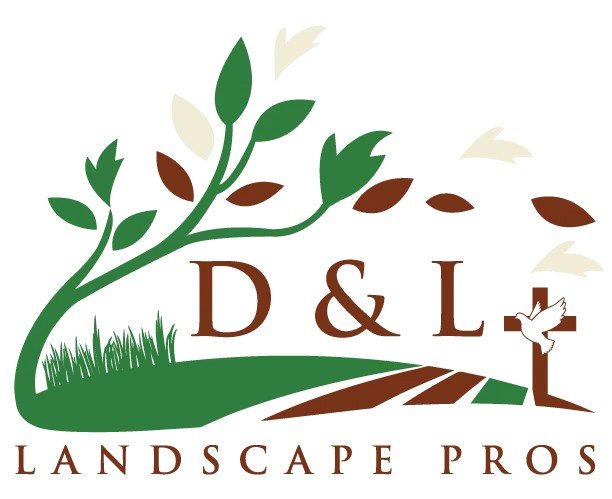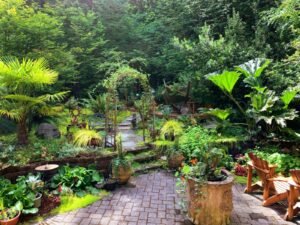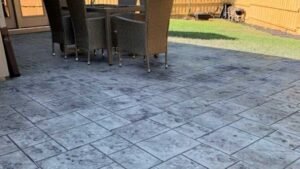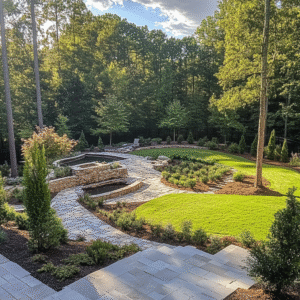If you’re a dog owner, you know how much your furry friend loves spending time outside. Whether they’re zooming around the yard, lounging in the shade, or sniffing out their next adventure, having a pet-friendly yard that’s functional, and fun for your dog is a game-changer. With a little planning, you can turn your outdoor space into a haven that both you and your dog will enjoy. Here’s a guide to creating a dog-friendly yard, packed with landscaping ideas that will keep your pup happy and your garden looking great.
1. Pick Dog-Safe Plants and Materials
One of the first things to think about when making a pet-friendly yard is safety. Some plants that look lovely in the garden can actually be harmful to dogs. Common favorites like azaleas, daffodils, and tulips are toxic to dogs if they nibble on them. Instead, go for dog-safe plants like sunflowers, marigolds, or even hardy herbs like rosemary and thyme. These plants won’t just keep your dog safe; they’ll add color and charm to your yard too.
It’s also smart to think about the materials you’re using. For instance, avoid cocoa mulch, which smells great to dogs but can be toxic if ingested. Cedar mulch is a much safer alternative and has the added bonus of helping to repel fleas. If you’re adding pathways or patios, stick to non-slip materials like flagstone, which is not only durable but also gentle on paws.
2. Set Up a Dog-Friendly Play Area
Every dog needs space to run and play, and a designated play area can make sure your dog stays entertained while keeping the rest of your yard intact. If you have the space, create a patch of lawn or install artificial turf. Artificial turf is particularly dog-friendly—it’s soft on paws, easy to clean, and stays green year-round, no matter how much your dog runs or rolls around on it.
For dogs who love to dig (and there are many!), think about giving them their own digging zone. A small sandbox or designated dirt area can give your dog an outlet for their natural digging instincts while sparing your flower beds. You can even make it a game by hiding toys or treats in the sand, teaching them to dig in their special spot.
3. Make Sure Your Yard Is Secure
A fence is essential for keeping your dog safe in the yard, but not all fences are created equal when it comes to active dogs. Depending on your dog’s size and energy level, you might need a taller, more secure fence to prevent them from jumping or climbing out. If you’ve got a small dog, standard fencing might be fine, but for bigger or more adventurous pups, a fence that’s at least 6 feet tall is a good idea.
Pay attention to gaps or loose boards, too. You want to make sure your dog can’t squeeze through or dig underneath the fence. Some owners even add a “window” to the fence so their dog can peek out safely without the urge to escape. This can satisfy their curiosity and reduce barking.
4. Provide Plenty of Shade and Water
Dogs love to play outside, but they also need a place to cool off. Make sure your yard has plenty of shaded spots where your dog can relax during hot days. Trees, pergolas, or even a simple patio umbrella can provide a cool retreat. If your yard doesn’t have much natural shade, consider adding a doghouse or a shade sail to create a safe, cool spot for your dog.
Water is just as important, especially in the warmer months. Keep a water bowl filled with fresh water in the yard, or if you want to go a step further, install a pet-friendly yard fountain. Some dog owners even add splash pads or small pools to help their dogs cool down on those scorching summer days.
5. Choose Paw-Friendly Ground Covers
The type of ground cover you choose can make a big difference in your dog’s comfort and safety. Grass is great, but it can wear down quickly in high-traffic areas. If your lawn is taking a beating from your dog’s daily romps, consider alternatives like clover. Clover is soft, resistant to wear, and stays green longer than grass. Plus, it’s less likely to show those unsightly yellow spots from dog urine.
Other good options include pea gravel, which is easy to clean and comfortable for paws, or smooth river stones for decorative areas. Just avoid sharp or rough gravel that could hurt your dog’s feet.
Conclusion
Creating a pet-friendly yard doesn’t mean sacrificing style or functionality. With a few thoughtful choices, you can design a space where your dog can play, explore, and relax safely. From using dog-safe plants and materials to setting up a play area and providing shade and water, these simple changes can make a big difference in your dog’s outdoor experience. With the right landscaping, you’ll have a pet-friendly yard that both you and your dog will love spending time in—because happy dogs make for happy owners!




